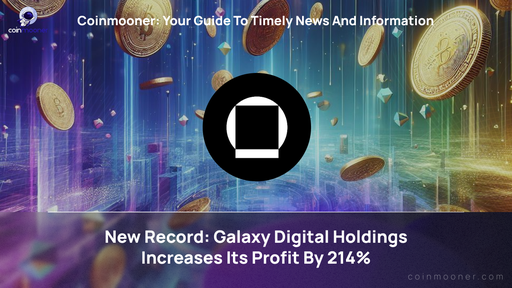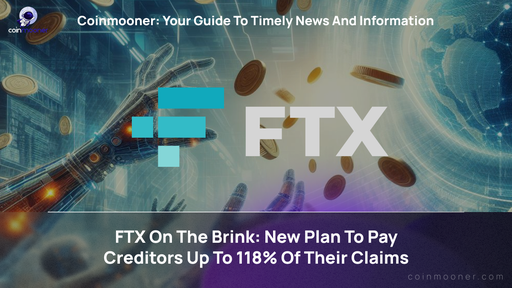2024 Outlook: Exploring the Prospects, Mechanisms, and Challenges of Stablecoins


In the world of financial technology, where even the most prominent players often face instability and risks, stablecoins stand out as a beacon of reliability. They aim to bring stability to the volatile realm of cryptocurrencies, attracting attention from seasoned investors and regular users. But what makes stablecoins unique? Unlike traditional cryptocurrencies like Bitcoin or Ethereum, stablecoins strive for price stability, often pegging themselves to stable fiat currencies such as the US dollar, euro, or others. This approach makes them particularly appealing to those seeking to minimize risks in the cryptocurrency sphere.
Stablecoins can employ various mechanisms to maintain stability, ranging from simple fiat reserves to more complex algorithmic models. However, with stability's advantages, stablecoins are also subject to regulatory risk. Due to their ties to fiat currencies, they may come under increased scrutiny from regulatory bodies, affecting their functioning and accessibility.
In today's news article, Coinmooner delves into the analysis of three of the most influential and promising stablecoins of the current time, to understand their dynamics and prospects in 2024. We'll dissect their mechanisms, explore their developmental history, and examine the factors influencing their prices and activity. A thorough examination of these cryptocurrency assets will help us better understand how they interact with financial markets and what role they may play in the future global economy.
TETHER

Tether was created in 2014 under the name Realcoin but later renamed Tether Limited. This cryptocurrency enterprise was launched to stabilize cryptocurrency exchanges by tying digital assets to traditional fiat currency—the US dollar.
Each Tether coin (USDT) is pegged to one US dollar, making it stable and predictable in its price behavior. This tie to fiat currency allows investors and traders to easily convert their cryptocurrency assets into stable assets without buying or selling through exchanges. Tether is widely used in cryptocurrency trading to ensure liquidity and portfolio stability. Many traders use Tether to move out of volatile cryptocurrency assets during market uncertainty temporarily.
Despite its popularity, Tether has yet to escape controversy. Questions have been raised about whether each USDT coin is fully backed by a dollar and concerns about the company's need for more sufficient audits. These issues have drawn regulatory attention, and Tether Limited has been subject to investigation by various financial institutions.
Despite its problems and criticism, Tether remains one of the cryptocurrency market's most influential and widely used stablecoins. Its peg to the US dollar and widespread adoption make it a key player in the world of digital finance. Currently, Tether ranks third among all cryptocurrencies regarding demand and supply, trailing only Bitcoin and Ethereum. The total market capitalization of circulating cryptocurrency reserves, like free float capitalization in the stock market, is currently $110,920,774,918.
Tether is built on several algorithms, including blockchain technologies like Bitcoin and Ethereum. These algorithms ensure the security, transparency, and decentralization of the Tether network, allowing users to conduct fast and reliable transactions worldwide.
USD COIN

USD Coin (USDC) was created in September 2018 by Circle, a top player in finance tech and payment systems, along with the cryptocurrency exchange Coinbase. This stable cryptocurrency is built on the ERC-20 standard, which runs on the Ethereum blockchain.
USDC tech lets you make fast and cheap transactions worldwide. A US dollar fully backs each USDC coin, keeping its price stable and reliable. This is done by holding an equal amount of dollars in bank accounts, allowing for easy conversion from USDC to dollars whenever needed.
Ethereum blockchain ensures transparency and security for USDC transactions. Every transaction is recorded on the blockchain, allowing for the tracking of every coin and the prevention of fraud and counterfeiting.
USDC gained popularity quickly due to its stability, transparency, and widespread use in trading on exchanges and for various financial operations in the digital world.
Currently, USDC holds the 6th position among all cryptocurrencies worldwide. The total market capitalization of circulating USDC stands at $33,520,873,919.
BINANCE USD

Binance USD (BUSD) is a stable cryptocurrency created by Binance, one of the largest cryptocurrency exchanges in the world. It was introduced in September 2019 as part of Binance's strategy to expand its financial services. Like many other stablecoins, Binance USD is pegged to the US dollar at 1:1.
The technology behind Binance USD is based on the Ethereum blockchain's ERC-20 standard, ensuring transparent and secure transactions. Each BUSD coin is backed by a reserve of US dollars held in Binance's bank accounts, providing high stability and reliability.
One key advantage of Binance USD is its direct integration with the Binance platform. Users can easily exchange their cryptocurrency assets for BUSD and vice versa, conducting fast and inexpensive transactions with minimal fees.
The technological features of Binance USD include the high throughput of the Ethereum blockchain, which ensures fast transaction confirmations and efficient scalability. Additionally, employing modern cryptographic methods, Binance USD ensures transaction security and confidentiality, making it appealing to many users.
Binance USD has become a popular tool for trading on exchanges, storing assets, and conducting various financial operations in the cryptocurrency environment due to its stability, transparency, and technological advantages to its users.
Today, BUSD ranks only 528th among all cryptocurrencies, but many payments and other valuable things happen with its help, putting it in the top 3 stablecoins. The total market capitalization of circulating BUSD is $70,529,773. Also, it's worth noting that BNB (Binance Coin) and BUSD (Binance USD) are two different cryptocurrencies issued by the Binance exchange, each with its functions and characteristics.

This article will be super helpful for crypto newcomers transitioning from Web2 to Web3. It'll help them understand why stablecoins are so crucial in crypto. These coins offer a way to invest while lowering risks because they're reliable, which is especially great for those wanting to avoid the ups and downs typical of most cryptos. Plus, stablecoins keep crypto exchanges liquid, making it easy for users to convert assets quickly.
It's also crucial to understand that the stablecoin market interacts with traditional financial markets and impacts the global economy. Nowadays, these coins aren't just for crypto—they're part of everyday life, too. Coinmooner will keep a close eye on new stablecoins and changes in existing ones. We urge everyone to stick to cutting-edge security methods in the crypto world to minimize the risk of losing funds.










